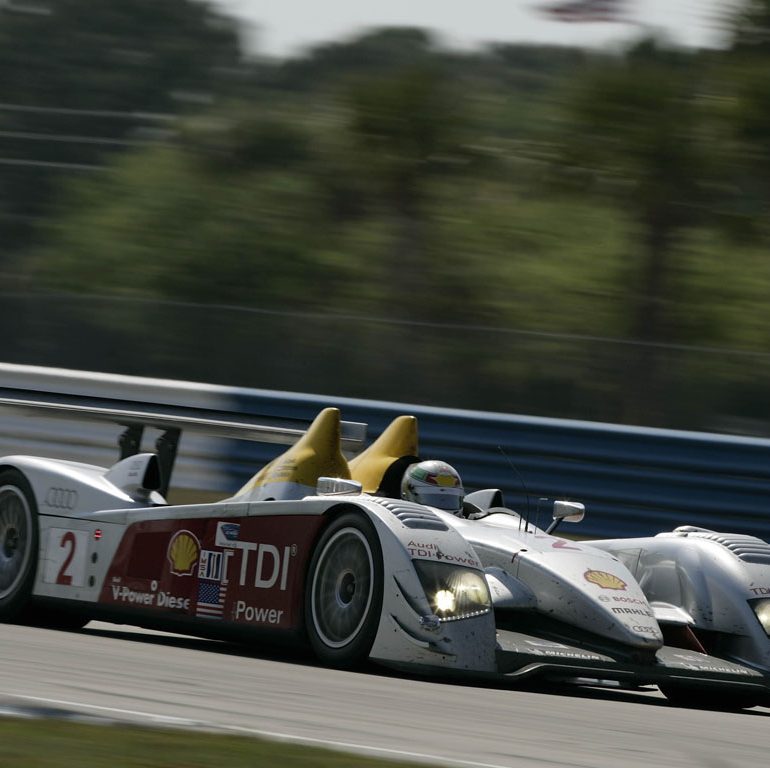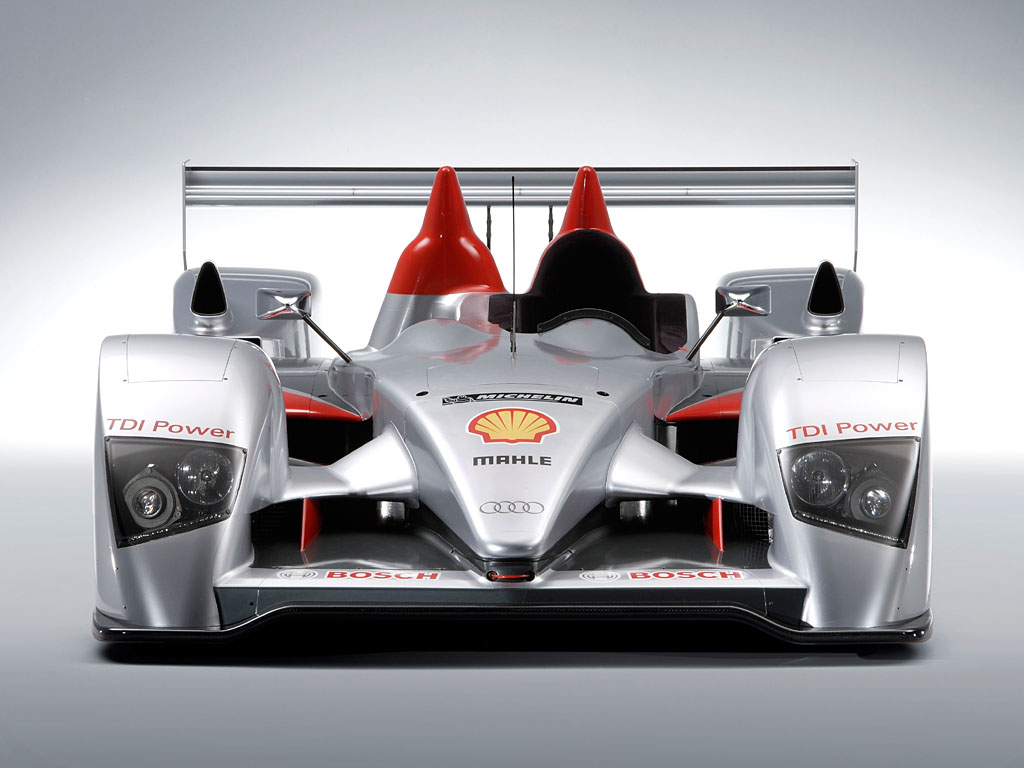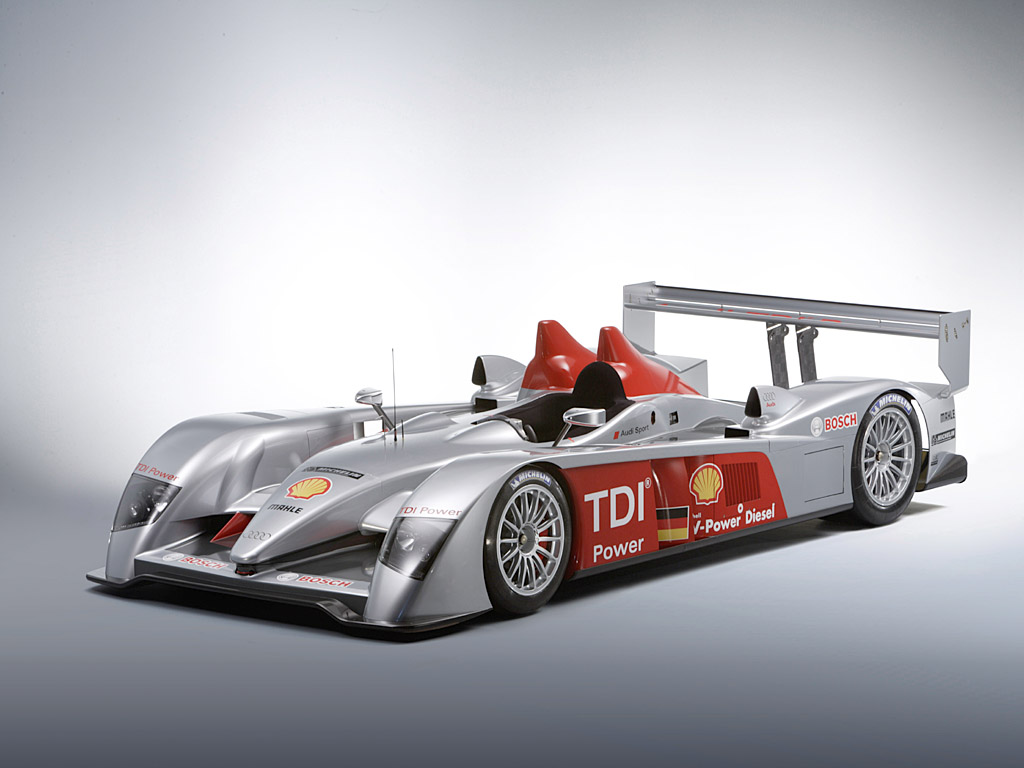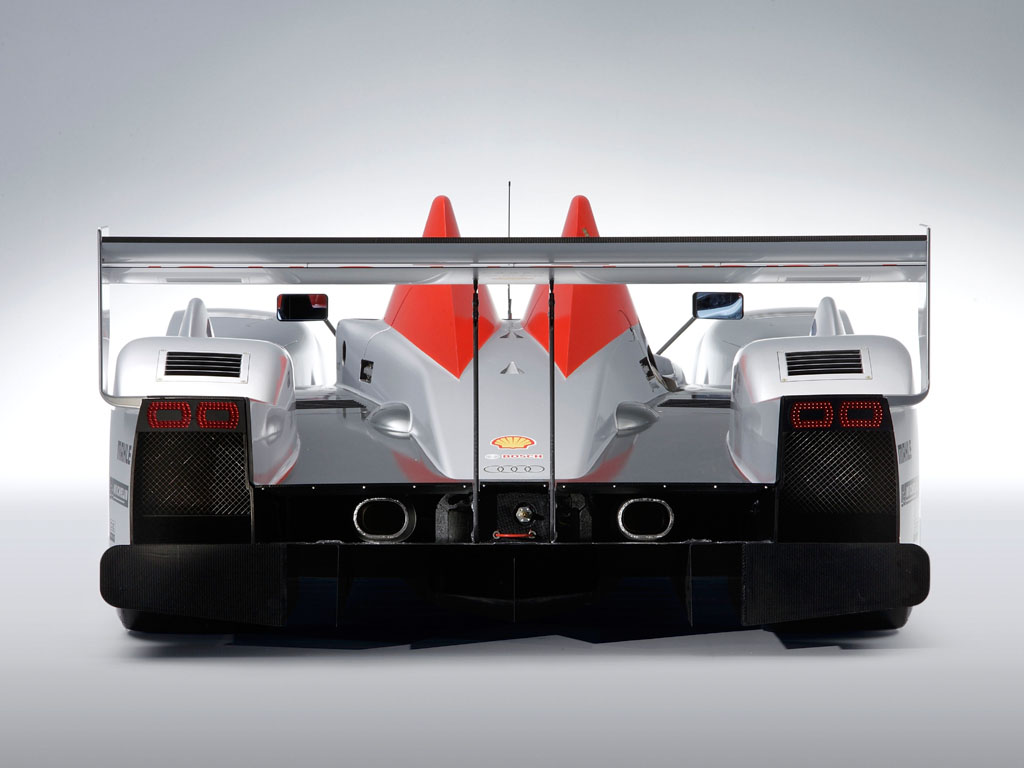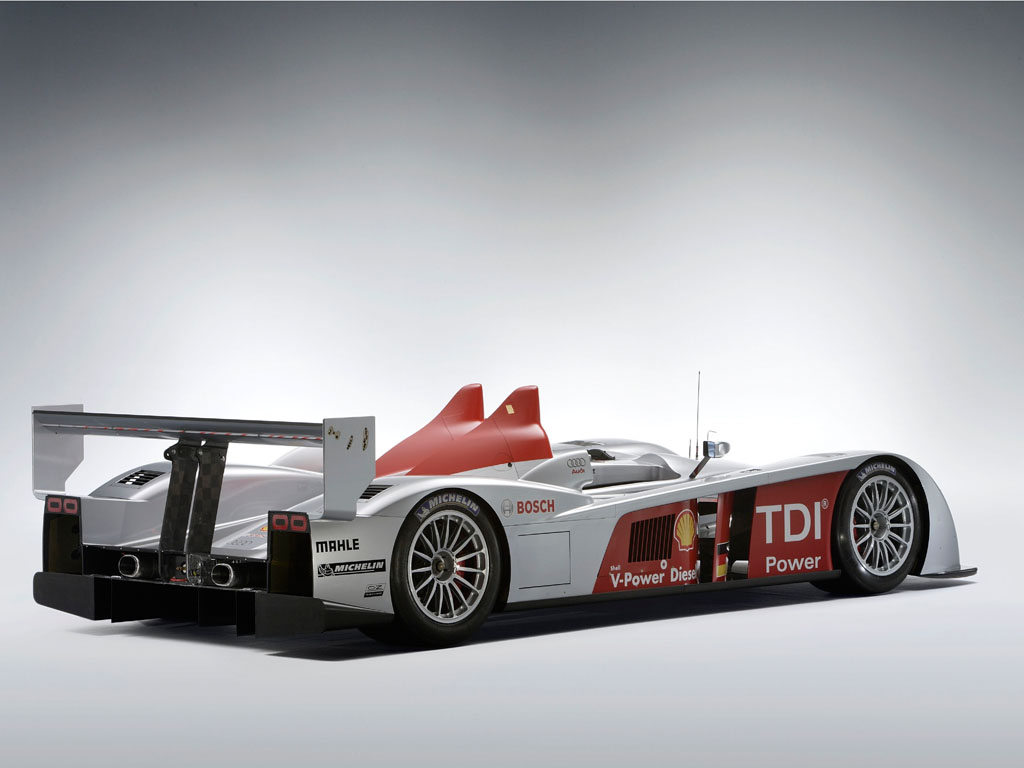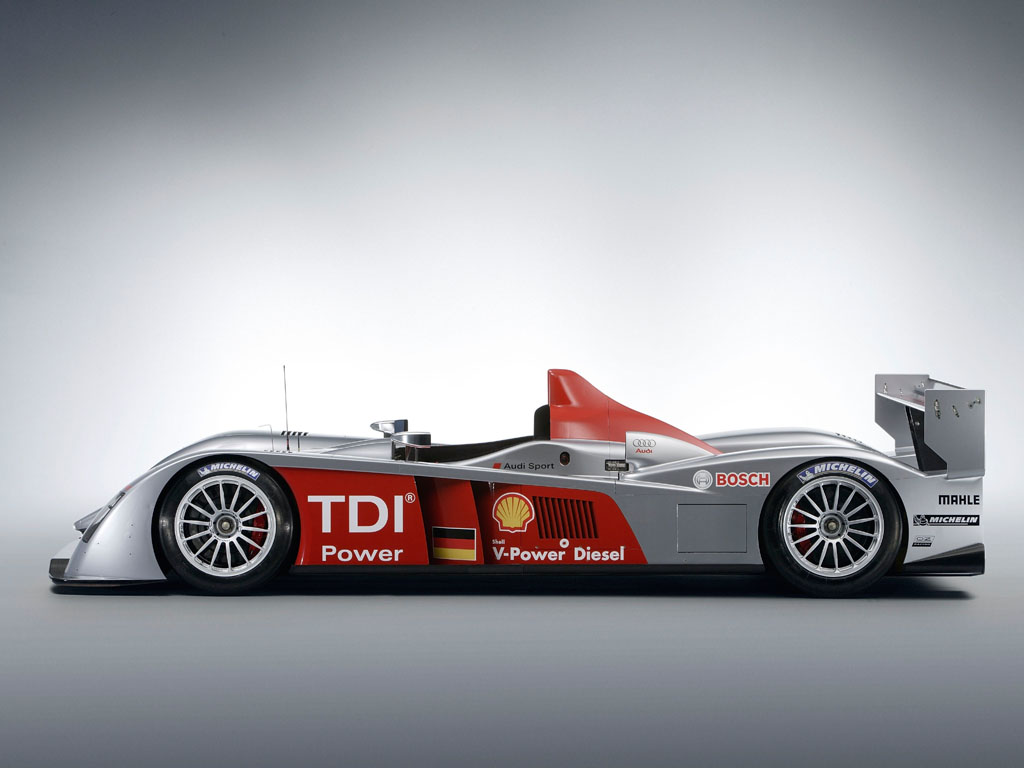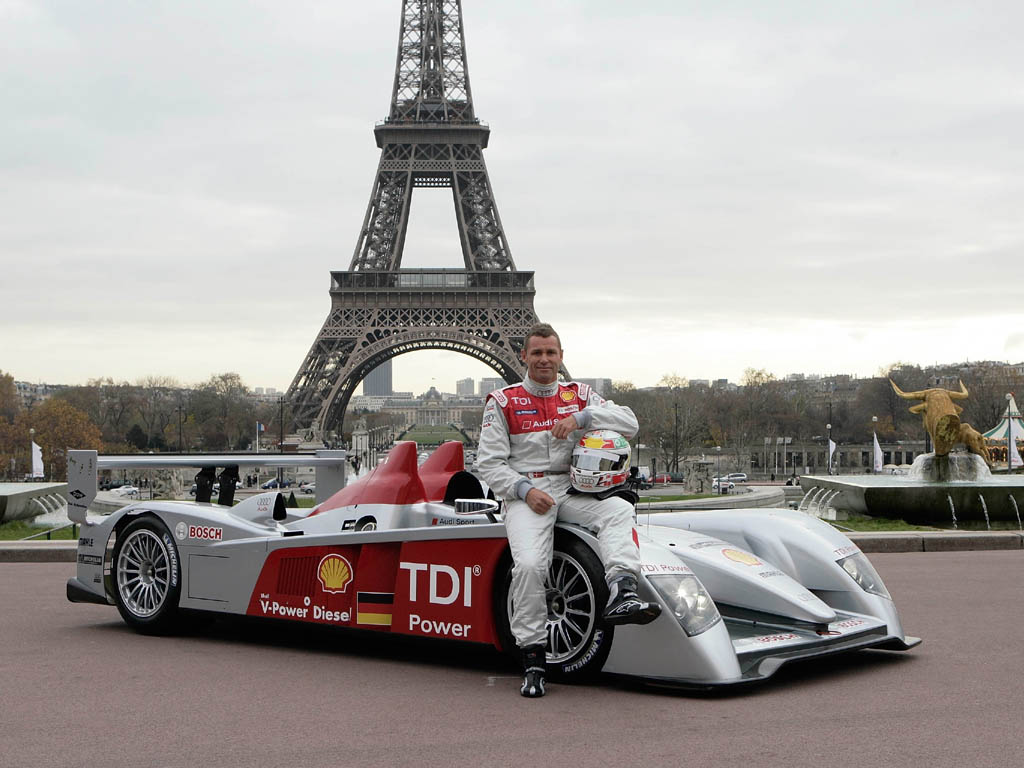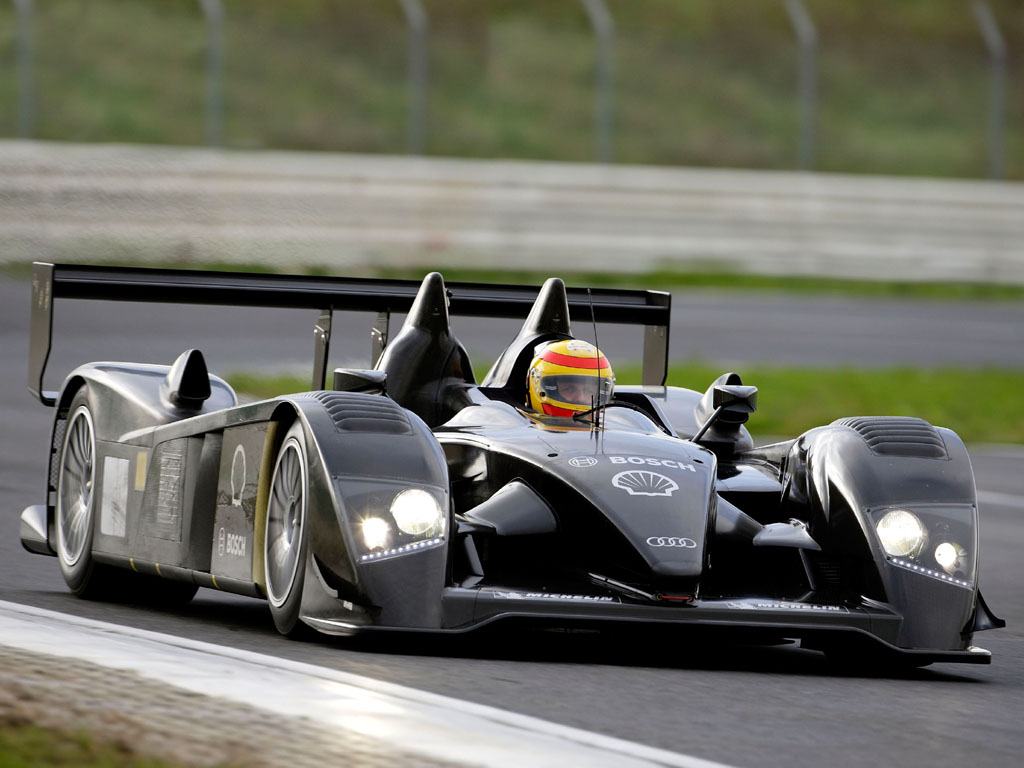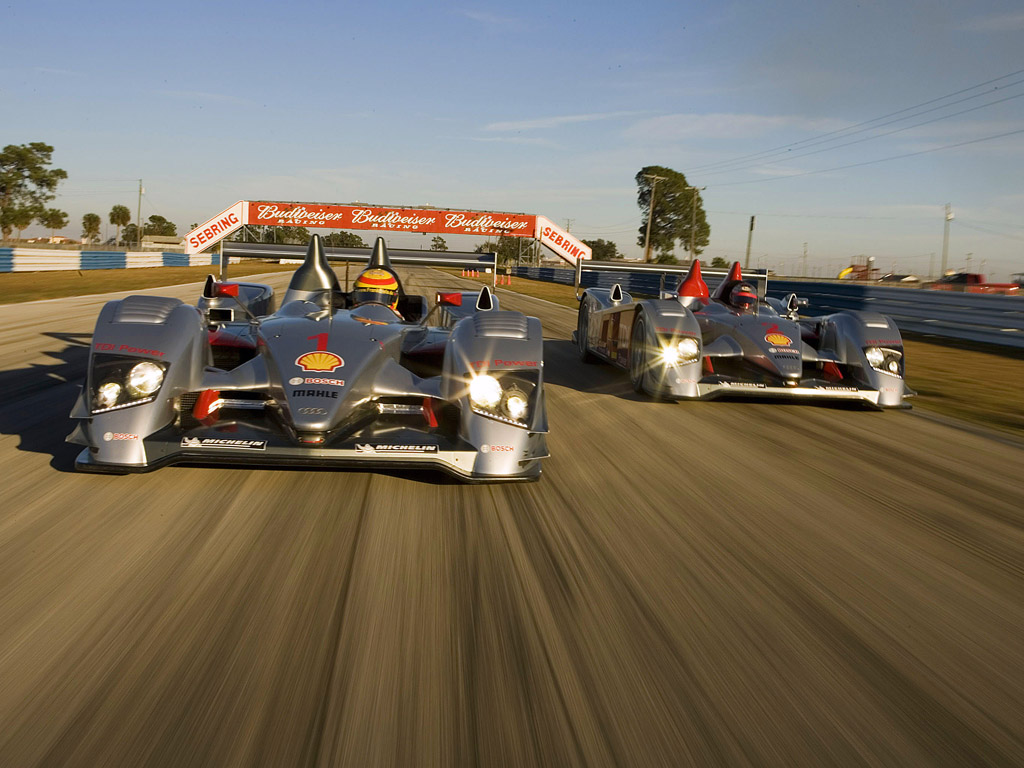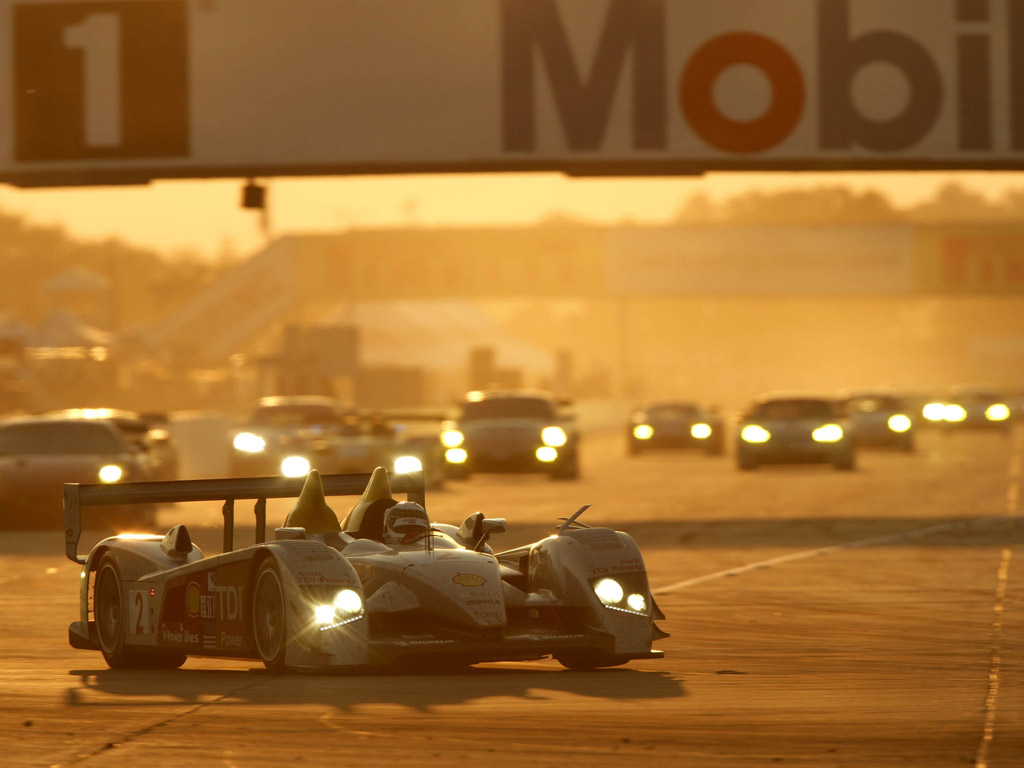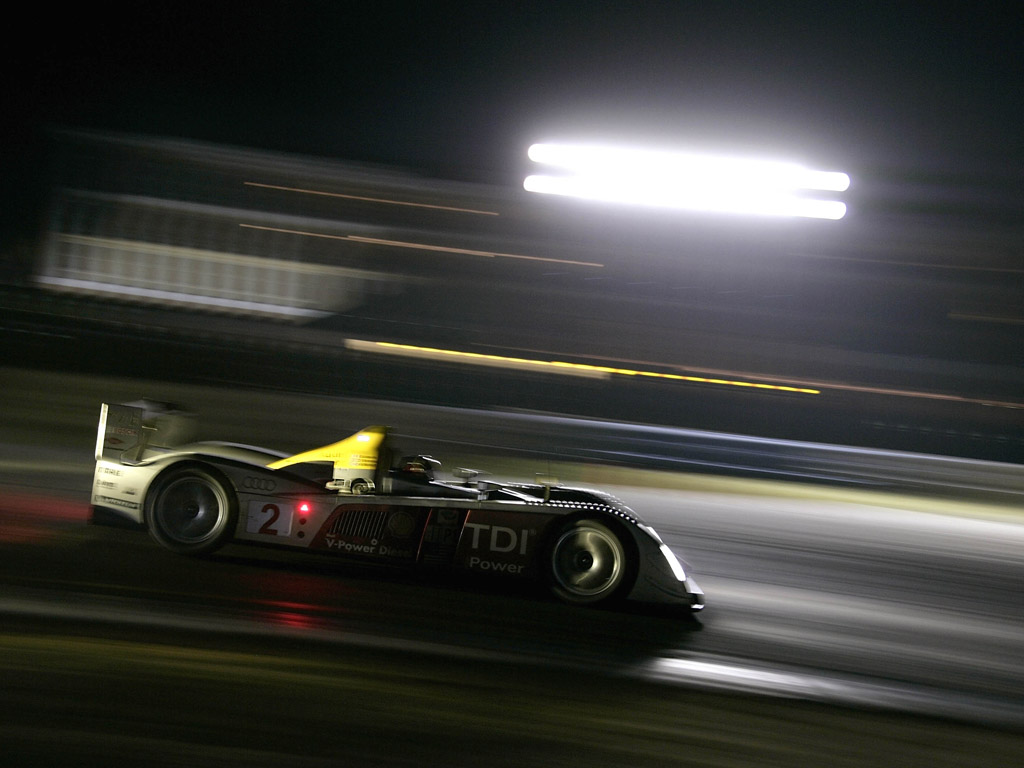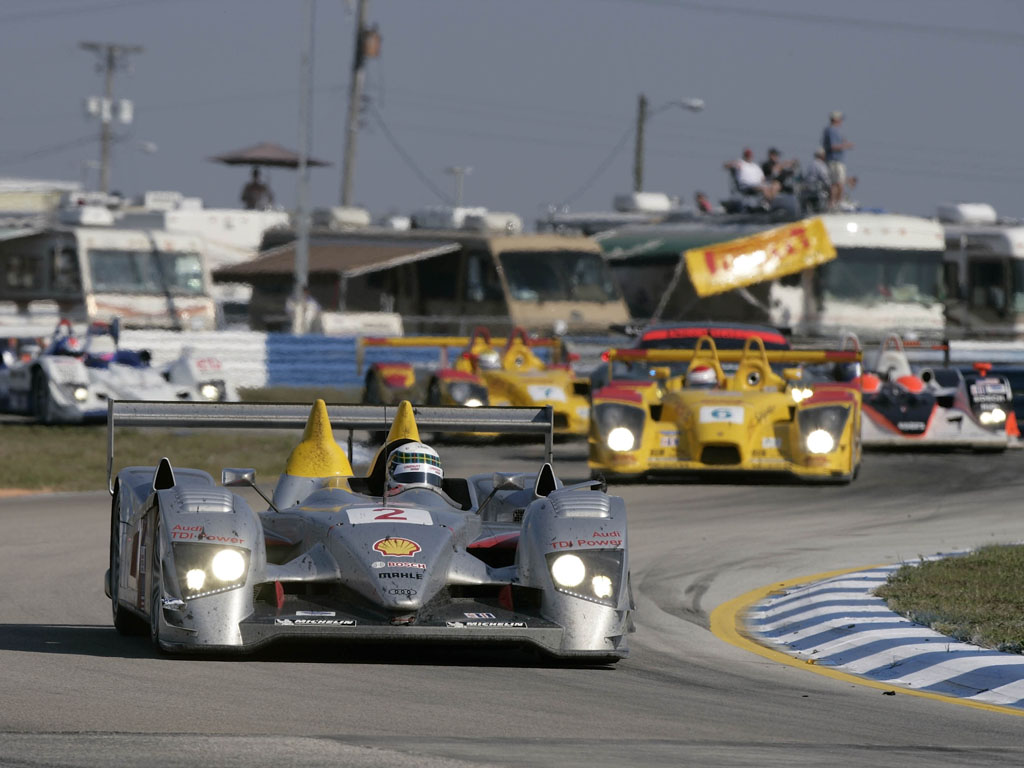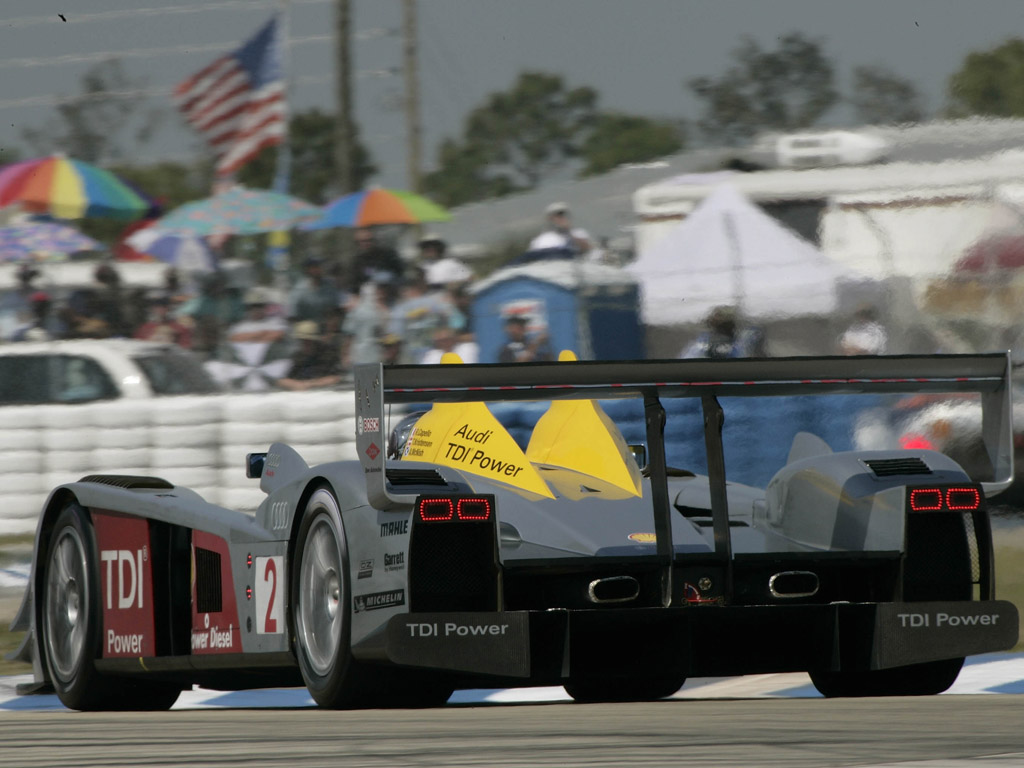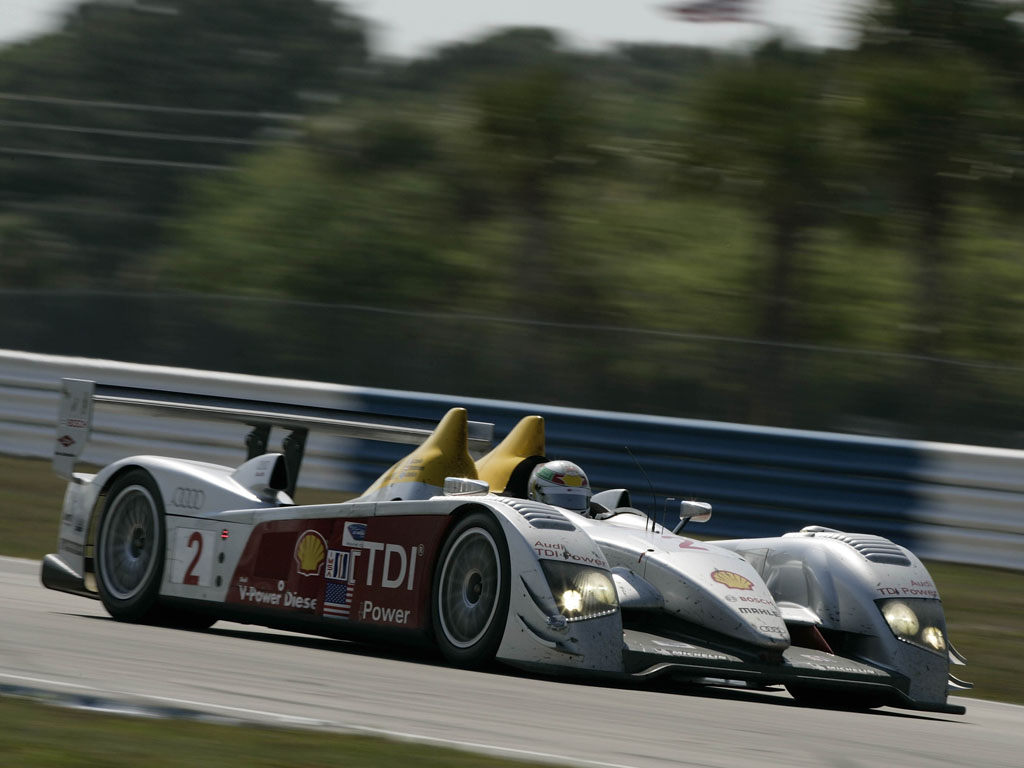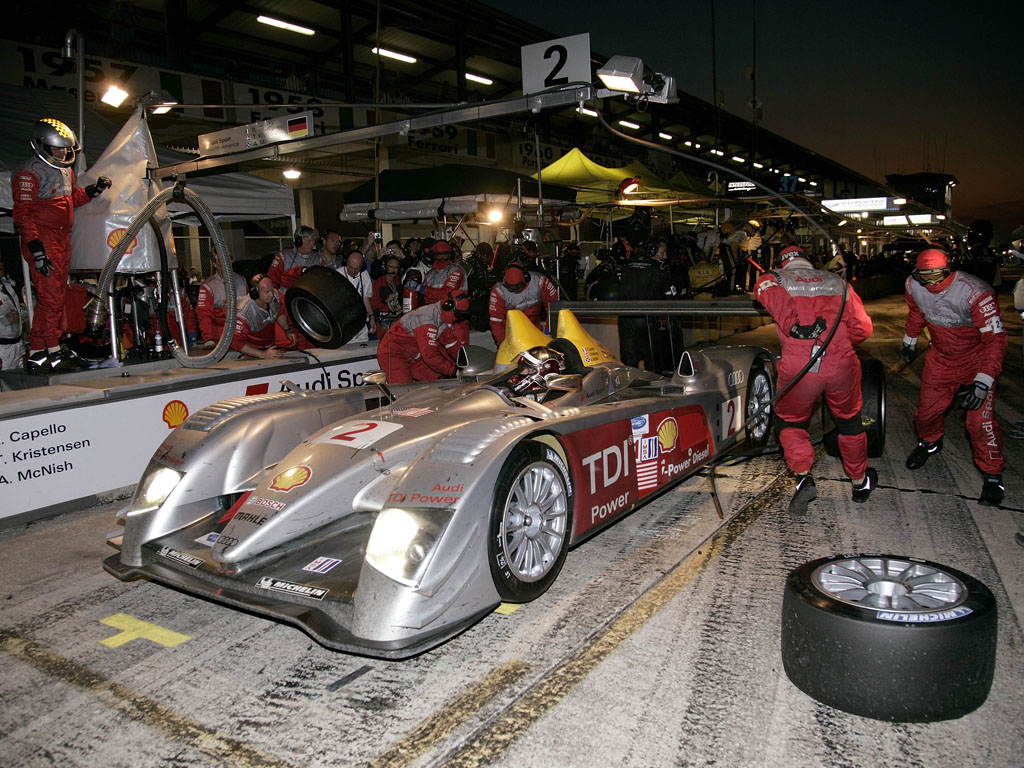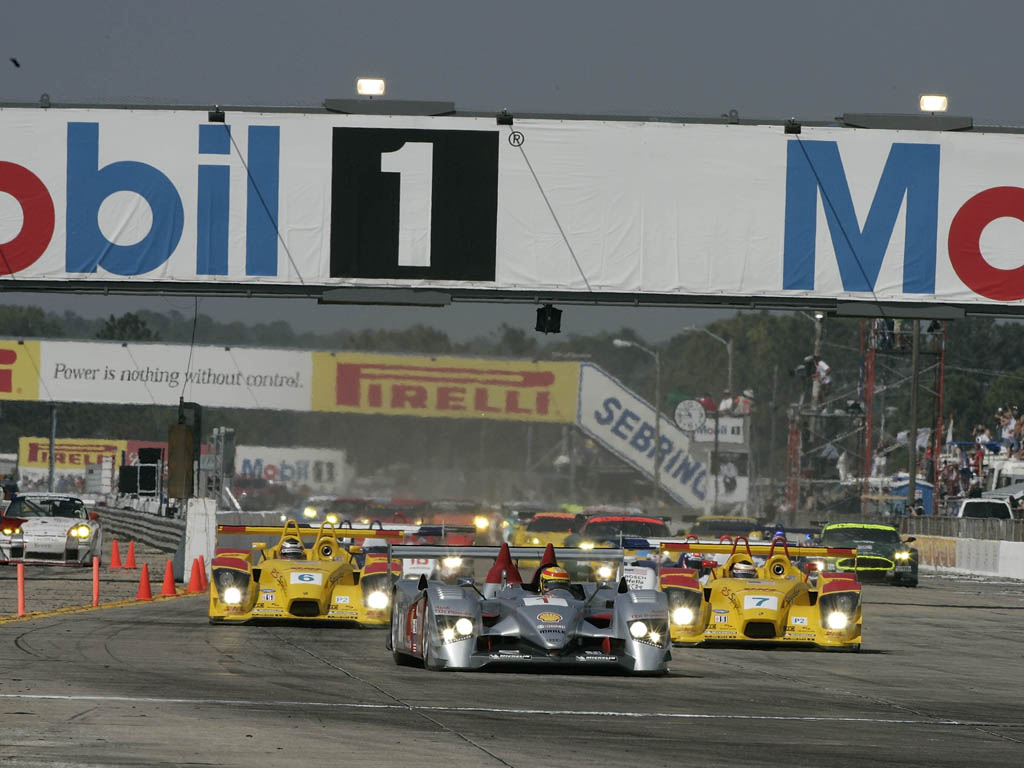2006 Audi R10
After 380 laps, 27 pitstops, and a nine-minute transaxle change, Audi took the first overall victory at LeMans with a Diesel-engined prototype. Entirely new from the R8 it replaced, the R10 benefited from excellent organization the team got winning the same event in 2000, 2001, 2002 and 2003.
After winning the event so many times outright, Audi wanted to promote diesel which was outselling gasolone in Europe. The move was daring, since the required engineering would be heavier, but that was offset by the increased energy levels in diesel that gave better economy
Another benefit of diesel was its torque and Audi set out to design the most powerful diesel in the world. To deal with internal stress, Mahle supplied special two piece pistons were made that were divided to provide a cooling channel. These had to deal with the pressure provided twin turbos that made over 650 bhp.
Audi Director Wolfgang Ullrich had a huge distaste for black smoke which is commonly associated with oil burning diesels, so a special particulate filter was included in the exhaust. These were engineered by DOW and made from chemically treated ceramic honeycomb.
Story by Supercars.net
2006/06/18 – AUDI has written an important chapter in the history of motor racing with its historic triumph in the Le Mans 24 Hour race. The new Audi R10 TDI was the first diesel car to win arguably the toughest car race in the world. In front of a record crowd of 235,000 spectators, Frank Biela (Germany), Emanuele Pirro (Italy) and Marco Werner (Germany) clinched the sixth and most important Le Mans win for Audi so far.
The fans on the race track and a worldwide audience of millions of TV viewers saw an impressive demonstration of Audi TDI Power and the performance of modern diesel engines. The brace of Audi R10 TDI cars, powered by a 650 hp V12 TDI engine, were by far the fastest and most economical cars. During the entire race, one of the new diesel sportscars from Ingolstadt was at the head of the field. Le Mans record winner Tom Kristensen drove the fastest lap of the race, setting a 3m 31.211s time, and he was the first driver at the wheel of an LM P1 sportscar to cover 16 laps with one fuel load. Completing 380 laps, Audi also set a new distance record.
In the race, the advantage in fuel consumption of the Audi TDI Power was visible for the spectators too: on average, the Audi drivers only pitted every 14 laps to refuel 90 litres of Shell V-Power Diesel. The opposition, who relies on petrol engines, had to pit considerably more often. The fans were also impressed just how quiet an environmentally friendly 650-hp sportscar can be.
—
2006/03/19 – The new Audi R10 TDI has immediately written motorsport history in its first outing: Dindo Capello (Italy), Tom Kristensen (Denmark) and Allan McNish (Scotland) won the 12-hour race at Sebring (USA) achieving the first ever victory of a Diesel powered sportscar. Tom Kristensen became the first driver to win America?s most famous endurance race for a fourth time, achieving another record after his record seventh Le Mans victory from last year.
Allan McNish had already shown the potential of the 650-hp V12 TDI engine with a record-breaking pole position time in qualifying. Because the heat exchanger had to be replaced after the morning warm-up, Dindo Capello was forced to start the number two R10 TDI from the pit-lane starting his chase from the back of the field.
It took Capello only half an hour before he had moved from 35th and last position to second just behind the sister car of Frank Biela. Shortly before the end of the second hour, the Italian took the lead, which the number two R10 TDI kept until the finish. Only changing the fuel filter and two loose wheel nuts caused unscheduled pit-stops.
The number one Audi R10 TDI that had clearly led the race for the first two hours did not reach the finish. The car was withdrawn just before one-third distance due to an overheated engine.
—-
13.12.2005- Audi will become the world’s first automobile manufacturer to fight for overall victory with a diesel engine in the famous 24 Hours of Le Mans. The all-new Audi R10 is powered by a totally new 5.5-litre, twelve-cylinder bi-turbo TDI engine, which is extremely quiet and economical.
The Le Mans Prototype significantly exceeds the power produced by the majority of previous Audi racing cars – including that of its victorious R8 predecessor. The heart of the Audi R10 is a completely new V12 TDI engine with a cubic capacity of 5.5 litres – the maximum permitted at Le Mans. Audi ventures into previously unexplored diesel-engine terrain with power exceeding 650 hp (485 kw) and torque of more than 811 ft lbs (1100 nm) from the V12 power plant.
At first glance, it is visible that the new Audi R10 carries genes from the extremely successful R8, nevertheless, the new LM P1 sportscar’s chassis is a new design. One of the most significant differences to its predecessor, the R8, is the integration of monocoque and bodywork. The R8 still had a traditional chassis clothed in synthetic bodywork, whereas the majority of the carbon-fibre parts belonging to the R10 monocoque are now suspended directly in the air flow and therefore require no additional fairings.
The modular design and serviceability known from the R8 was retained, but further refined, in the basic concept. It is not only the rear bodywork section of the R10 that can be removed at the flick of a wrist, the front section, including crash structure, is also removable to ease access to the front suspension for the mechanics. It is possible to change the gearbox and its internals within a short space of time.
The new Audi R10 successfully completed its first test at the end of November. An extensive test programme, including the 12-hour race at Sebring (USA) on 18 March, is scheduled before the 24 Hours of Le Mans on 17/18 June 2006. The development team from Audi Sport is supported by Reinhold Joest’s squad, which also performed this task during the R8 project.
Stories by Audi, edited by Supercars.net
In Detail
| related cars | 1999 Audi R8R |
| type | Racing Car |
| built at | Germany |
| engine | Stressed Aluminum V12 Diesel w/Mahle Forged Pistons |
| position | Mid Longitudinal |
| aspiration | Twin Garrett Turbos |
| valvetrain | Direct Fuel Injection |
| fuel feed | DOHC, 4 Valves per Cylinder |
| displacement | 5499 cc / 335.6 in³ |
| power | 484.7 kw / 650 bhp |
| specific output | 118.2 bhp per litre |
| bhp/weight | 702.7 bhp per tonne |
| torque | 1100 nm / 811.3 ft lbs |
| body / frame | Carbon Fiber Monoqiue w/Aluminum Core |
| driven wheels | RWD w/Viscous-Mechanical Differential |
| wheel type | OZ Magnesium Forged |
| front tires | 33/68-18 Michelin Radial |
| rear tires | 37/71-18 Michelin Radial |
| front brakes | Carbon Discs |
| rear brakes | Carbon Discs |
| front wheels | F 45.7 x 33.0 cm / 18 x 13 in |
| rear wheels | R 45.7 x 36.8 cm / 18 x 14.5 in |
| steering | Rack & Pinion w/Power Assist |
| f suspension | Double Wishbones w/Coil Springs Over Dampers, Anti-Roll Bar |
| r suspension | Double Wishbones w/Coil Springs Over Dampers, Anti-Roll Bar |
| curb weight | 925 kg / 2039 lbs |
| length | 4650 mm / 183.1 in |
| width | 2000 mm / 78.7 in |
| height | 1030 mm / 40.6 in |
| transmission | X-Trac 5 speed Sequential w/Sachs Ceramic Clutch |
| designers | Wolfgang Appel (Chassis), Ulrich Baretzky (Engine) |
| key drivers | Dindo Capello, Tom Christensen, Allan McNish, Marco Werner, Frank Biela, Emanuele Pirro |
| race victories | Sebring 2006 1OA, LeMans 2006 1OA, Sebring 2007 1OA, LeMans 2007 1OA |


